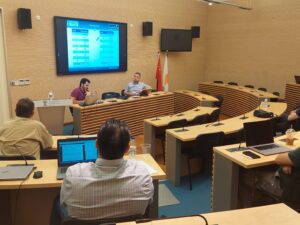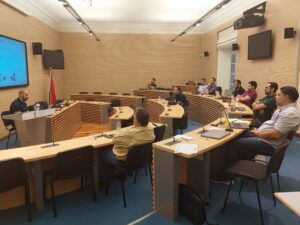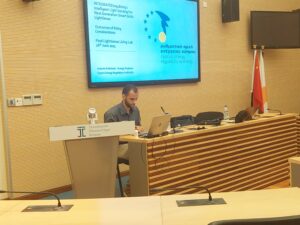📣The 6th and final Living Lab of the LightSense project was successfully held on 26th June, at Cyprus University of Technology (CUT). The consortium partners presented their final data and conclusions and discussed ways on how to manage the process of putting together the final report.
📌 Georgios Panaretou from CUT presented the machine learning algorithm for detection of potential threats to infrastructure integrity by analysing data received from the Distributed Acoustic System (DAS), the dataset used to train the algorithm which included 15 different types of sounds and the two approaches for classifying these sound categories were discussed. The presentation was followed by a discussion on the use of this methodology for other applications.
📌 Professor Kyriacos Kalli (CUT) presented BOTDA – Brillouin Optical Time Domain Analyzer – the first developed in Cyprus. The system development, setup, problems encountered and operation was demonstrated followed by discussion on the possible future improvements and product commercialisation.
📌 Professor Michael Komodromos from Frederic’s Research Center suggested a method to speed up BOTDA’s measurements. He examined ways to lower the computational complexity in determining the Brillouin Frequency Shift (BFS) in BOTDA systems. The presentation concluded with an extended discussion towards further improvements to the method, mainly using less points in the fitting by exploiting the symmetry of the BGS.
📌 Dr. Andreas Theodosiou from Lumoscribe, presented a solution for improving the spatial resolution of BOTDR measurements using signal processing treatments for static and dynamic Brillouin distributed sensing.
📌 Finally, Antonis Kolokasis from CERA presented the policy consideration outcomes. Specifically, CERA identified the standards, policies and responsible organizations for the development and implementation of fiber optic standards and polices, internationally and in Cyprus.
The event concluded with partners agreeing to coordinate and exchange all information needed that will make the process of developing the final deliverables report as smooth as possible.
As the LightSense project came to an end, we are excited to see the outcomes and results contributing towards the development of a smart and sustainable future. Through the fruitful collaboration of all relevant entities and the dissemination of distributed sensing to private stakeholders, we are convinced that the exploitation of these novel technologies can be achieved in many industries, with substantial economic and environmental benefits.


